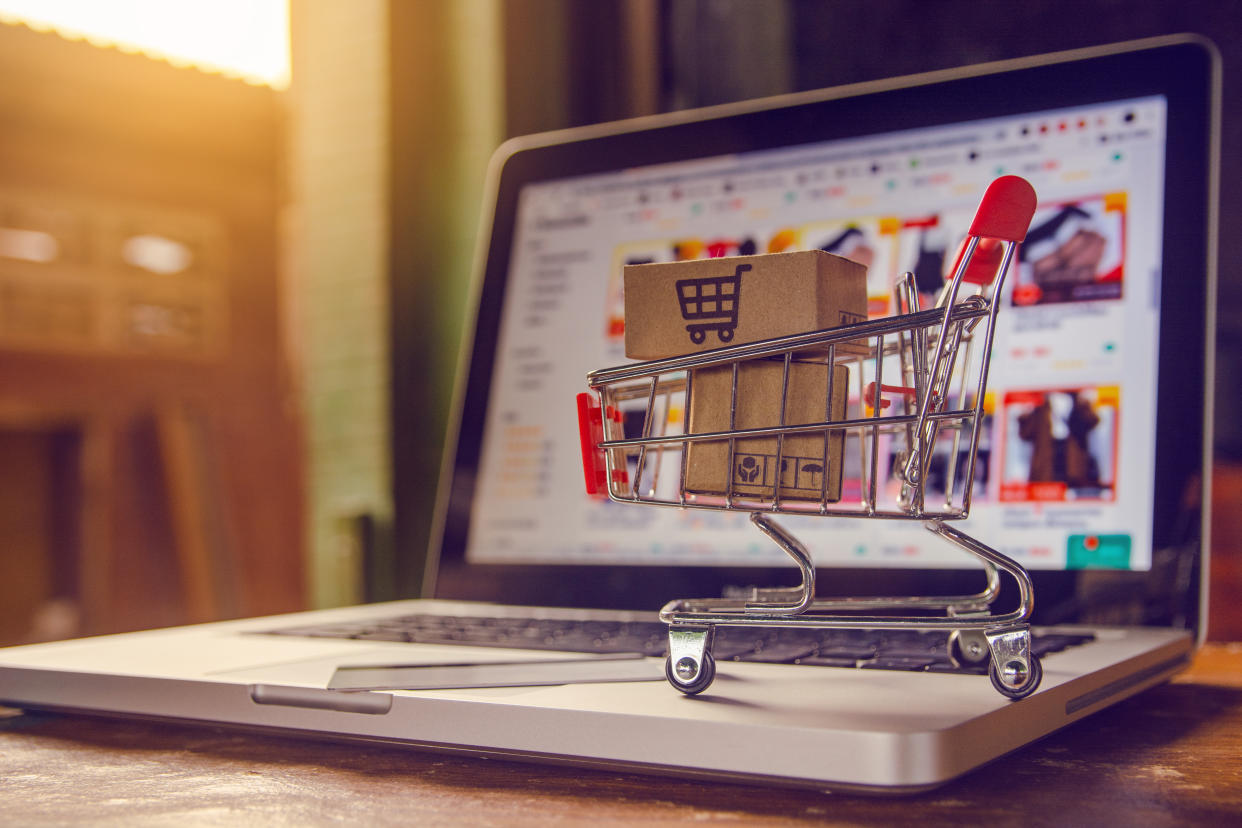How to Prepare for the Next Phase of COVID-19

Click here to read the full article.
In many ways consumer behaviors and retail trends are ever-changing. Still, patterns are emerging and even mirroring across various markets.
While many cities in the U.S. have already settled into phase five, or restricted living, on Nielsen’s six threshold levels of the coronavirus, others are just stepping in. As predicted by Nielsen’s data, phase five is marked by mass cases of COVID-19 and communities ordered into lockdown. In tandem, consumer behavior shifts include increasingly restricting shopping trips, limited online fulfillment, and a rise in price concerns as limited stock availability impacts pricing.
As companies prepare to enter the next stage, Lauren Cooley, senior vice president of retailer and brand solutions at RetailMeNot, talks to WWD about how retailers are preparing or can begin preparing for phase five, emerging retailer trends and consumer behaviors.
WWD: What is happening as retailers shift from phase four to phase five?
Lauren Cooley: COVID-19 has created a challenging environment for retailers. Heading into phase four, many retailers responded by shuttering their doors to prioritize consumer safety: Nordstrom, Saks Fifth Avenue, Macy’s, H&M, Chanel, Ralph Lauren, Sephora, Nike, Apple and more.
Phase five introduces a host of challenges for retailers. Retailers need to pay closer attention to their online presence — from web site storefronts to content partnerships, to social media. Times like these make it more important for all brands to constantly evaluate and update their messaging.
Bolstering online shopping alone is not enough. We’re seeing in COVID-19 hotspots like New York City and San Francisco that leaning on delivery is still not the safest option. To combat this, we can expect to see more retailers leaning on their flexible purchasing options such as buy-online-pick-up-in-store, or BOPIS, or curbside pickup and incentivizing those options with deals.
WWD: What does phase five mean for consumer behavior and consumer sentiment?
L.C.: Phase five will more clearly highlight the difference between the “Savings Strategist” and the “Trendy Spender.”
There is no doubt that the quarantine guidelines have driven many “Trendy Spenders” to impulse purchases that are more “nice-to-have” than necessities. These purchases include beauty, consumer electronics, apparel — both to wear during the quarantine, as well as “hopeful” items to wear once the quarantine has safely lifted. Though boredom shopping may wane slightly as shoppers remain indoors, retailers have the opportunity to capture these consumers with good deals that push to purchase.
Cost-conscious shoppers are trimming unnecessary spending and focusing their limited budgets on grocery, health-care products like vitamins and office supplies. These consumers are focused on getting the most for their money and respond positively to deals on the items they need and use daily. This presents retailers with an opportunity to provide value to consumers through discounts and cash-back offers to establish longer-term shopper loyalty.
WWD: Does a move to phase five indicate a decline in online shopping?
L.C.: On the contrary, a move into phase five indicates an increase in online shopping and a BIG shift in what consumers are shopping for. In fact, RetailMeNot data shows heightened consumer interest in categories like clothing, toys and electronics for the week of March 22 when compared to just the week prior. Online shopping for necessities will continue, and we expect to see continued increases in interest in “nice-to-have” categories as the month continues.
WWD: As retailers move into phase five for an undetermined amount of time, how can they continue to have positive communications with consumers?
L.C.: Retailers need to be aware of their consumer communications now more than ever — from the copy on their web sites to e-mail blasts, to sales and promotions and beyond. This is the time to be agile. Though virus-related developments change on a daily basis, it is imperative that any communication to consumers mirrors the most up-to-date advice from the national advisories. For example, shoppers still receiving communications about in-store sales and promotions for nonessential products will come across more tone-deaf than useful when local governments are declaring a state of emergency.
WWD: What can retailers do to better prepare for the country at large to move into phase five?
L.C.: RetailMeNot is advising retailers to keep a close eye on the changing landscape and take necessary precautions as we move into phase five by:
1. Protect: First and foremost, protect your people. Retailers that put their employees at risk — or put the safety of their delivery partners at risk — lose internal confidence and are in danger of losing the trust and dollars of the general public.
2. Streamline: To cut down on unnecessary overhead that pulls resources away from best serving its shoppers and employees, retailers need to tighten operations by streamlining their own ordering and inventory purchasing. Look to partners like RetailMeNot and your own internal data to determine the products that are most in-demand.
3. Diversify: With supply chain operations in constant fluctuation amidst the crisis, identify opportunities to diversify your inventory with local or domestic suppliers.
4. Strategize: Consumers, from splurgers to savers, are looking for value. Times like these make it more important for all brands to reevaluate their content plans and update them appropriately. Spend more time closely evaluating and strategizing discounts instead of using promotions to clear inventor RetailMeNot saw increased online demand which created opportunities to attract at-home shoppers with new promotions.
5. Content, content, content: Understanding the landscape and adjusting in real-time is critical. Retailers who adjust messages appropriately and quickly will win.
Read more from WWD:
Coronavirus Predicted to Cause Biggest Beauty Decline in 60 Years
Retail Confronts Pandemic Safety and Inconsistent Oversight
How Long Will the COVID-19 Shutdown Last?
WATCH: A Style Director’s Guide to Working From Home
Sign up for WWD's Newsletter. For the latest news, follow us on Twitter, Facebook, and Instagram.

